Founding of the NMRA
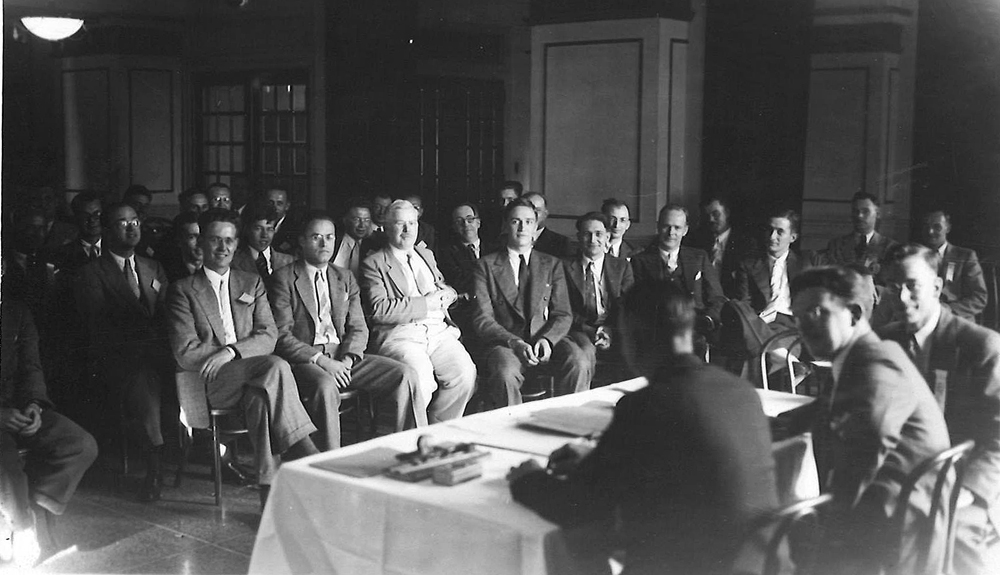
The National Model Railroad Association, 20 years ago, grew more or less spontaneously out of two basic needs of the fledgling hobby. The first was the need for standards to assure interchangeable equipment. The second was the social need for getting together with other followers of a hobby which was then thought by outsiders to be slightly odd.
It is hard now to even imagine, or to recall, the complete dimensional chaos which existed prior to the NMRA. O gauge was the predominant scale then, but there wasn’t even agreement on the exact gauge. Yes – everyone called it 1-1/4-inch, but one manufacturer said the 1-1/4” was to be taken on curves, and the track slightly narrowed on the straight! Others said the 1-1/4” measure was on straight track with the gauge slightly widened on curves. HO had three sets of scale and gauge dimensions.
About flanges and flangeways, there was even less agreement. Wheel treads varied all the way from nearly scale to a frankly tinplate “stay on the rails regardless of looks.” Third rail was a nearly universal means of power distribution, but nobody agreed on where the third rail should be located – that is – how high above rail level, and how far out from the running rail.
This need for standards was strikingly demonstrated at the first convention, Labor Day weekend 1935 in Milwaukee. Some of the visitors had brought equipment to run on our Milwaukee Union Terminal O Gauge Club railroad. The third rail shoes were just a bit too short and were continually slipping off the third rail, jamming, and causing derailments. The visitors said the third rail was wrong. We said the third rail shoes were wrong, and the convention nearly broke up before NMRA charter was signed!
This, of course, was the era of invention in our hobby. The many constructional and control details which we take for granted now were, then, popping out wildly all over the place as exciting technical innovations. The permanent magnet motor, the bridge rectifier, and other methods of direct current reversing control, were still experimental ideas on paper instead of accepted commonplace. Automatic coupling ideas were so many and so varied that it wasn’t even thinkable to start any attempt at standardizing. The practicalities of two-rail power distribution were still being devised rather than used. Prefabricated track just didn’t exist, and the standard method of construction was to put track together from wooden ties, spikes, and rail. Even punched fiber tie strip was still to come.
Is it any wonder then that there was a spontaneous desire for some type of organization which could channel model railroad thinking in this period of fruitful development? Is it any wonder, when cars from two different manufacturers wouldn’t even run through the same switch successfully that model rails said, “Let’s organize and get the manufacturers to compromise on dimensions that will at least run together?”
When we think of the 10,000 NMRA members of today, the group that met in Milwaukee was frightfully small – not more than several dozen, as I remember it. Most were from Milwaukee and Chicago. The convention banquet was simply a couple of tables pushed together in the YMCA cafeteria. The convention fan trip was a hike over to the Milwaukee Road station and roundhouse to watch the then-new streamlined Hiawatha steam locomotives in action.
The NMRA was actually formed at the beginning of a short business meeting. A resolution was passed that those present band together under the name of “The National Model Railroad Association” to promote the model railroading and to set standards for the hobby. The resolution was written on a large sheet of paper and everybody signed it. The NMRA was on the track with a clear signal. Discussion, committee appointments, and election of officers finished the meeting. The rest is history.
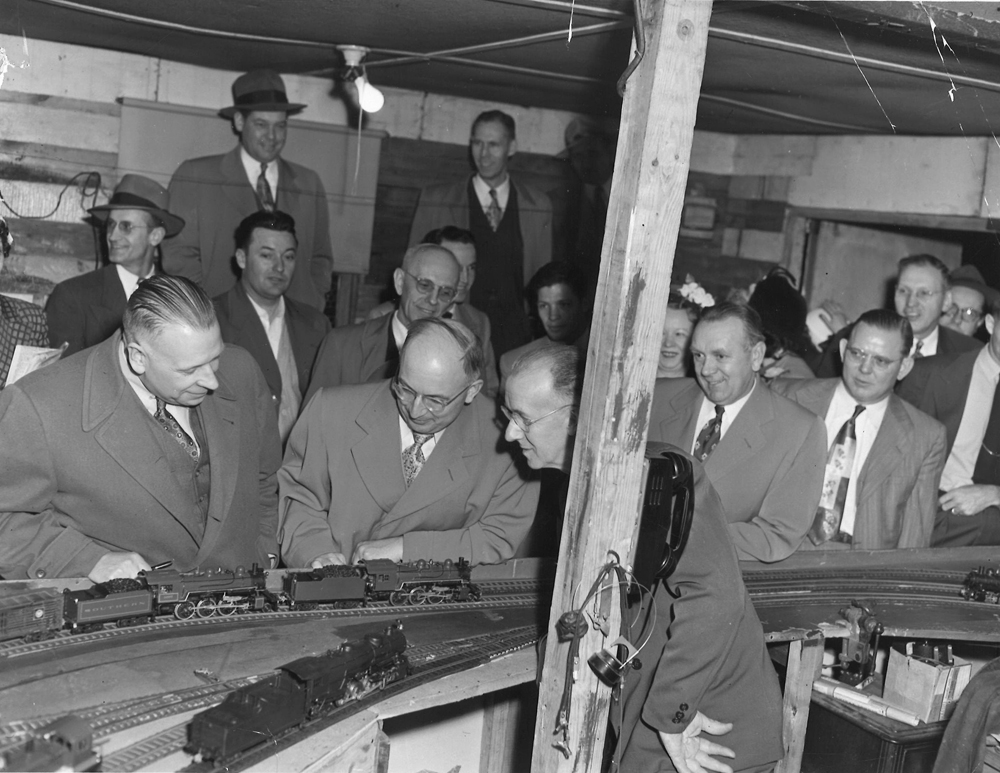
It began to come from other sources too. I remember the tingle of satisfaction which ran through the group at the Chicago convention in 1936 when a message of recognition and appreciation was read from the Association of American Railroads. However, model railroading really started to come into its own at the Detroit convention in 1937 when a writer appeared from Time magazine and a sympathetically written story of our hobby appeared for the first time in a national publication.
It was at that Detroit convention also that our NMRA emblem was cooked up – in a place of refreshment on lower Woodward Avenue. What is more symbolic of railroading, at least in the age of steam, than a locomotive driving wheel? It was sketched on a paper napkin! What is more symbolic of friendship than a clasped hand, or in railroading, the hand-like coupler? It too was sketched onto the paper napkin, combined into a pleasing design with the driving wheel – and we had an emblem, a lapel pin, a means of recognizing our fellow model rails wherever we might meet.
It is interesting to look back to the first convention in Milwaukee and notice that even then the idea was proposed of sub-dividing the NMRA into regions; in fact, the first attempt at organizing a region was a meeting at Springfield, Mass., in November 1935. It resulted, however, not in an NMRA affiliate, but in a New England Model Railroad Association. I believe the Central Region, organized at Columbus, Ohio, in February 1936 was the first. This area included some of the real model railroad boomers from places like Pittsburgh, Detroit, and Columbus who had come the longest distances to the original 1935 convention.
Out of twenty years of conventions some pints stand out. The 1939 meeting was help in New York City in the midst of the World Fair that year, close to the outdoor show, “Railroads on Parade”, and the huge model railroad exhibit of the eastern railroads. Coming back from the business meeting I remember emerging from the subway at Times Square with the English engineer who had come over with the Coronation Scot to see the electric lights running around the Times Building with the story that Poland had been bombed and England and Germany were at war! I remember too, during that war, the small meeting in Detroit between key members of the Model Railroad Manufacturers Association and the Engineering Committee of the NMRA. Manufacture of model railroad kits had been stopped by the war, and out of a very fruitful get-together came improved standards and increased standards compliance when manufacturing was resumed.
Practically every convention had its fan trip, and all have been fun, but two particular scenes stand out in my mind. One was at Milwaukee during the 1940 convention. The fan train had stopped at BJ signal tower so we could watch the streamliner Twin Cities 400 go by. Just before the streamliner was due there came a sudden hard downpour of rain. Everybody sought shelter if he could find it. Then, as the blast of the diesel air horn announced the streamliner, fan appeared from everywhere, but mostly from a small outhouse behind the signal tower. As I remember the scene, there must have been at least a dozen men keeping dry in that one outhouse!
And I remember the strikingly scenic trip on the Denver & Rio Grande Western narrow gauge main line which preceded the Denver convention in 1949. I remember it most because as our train approached Durango, two armed horsemen came galloping diagonally across the plain toward the locomotive and flagged down the train. I was in the observation car on the rear end, and watched this horse-opera with detached interest until the two-armed men came into the observation car and asked, “Where is Al Kalmbach?” My friends hastened to point me out.
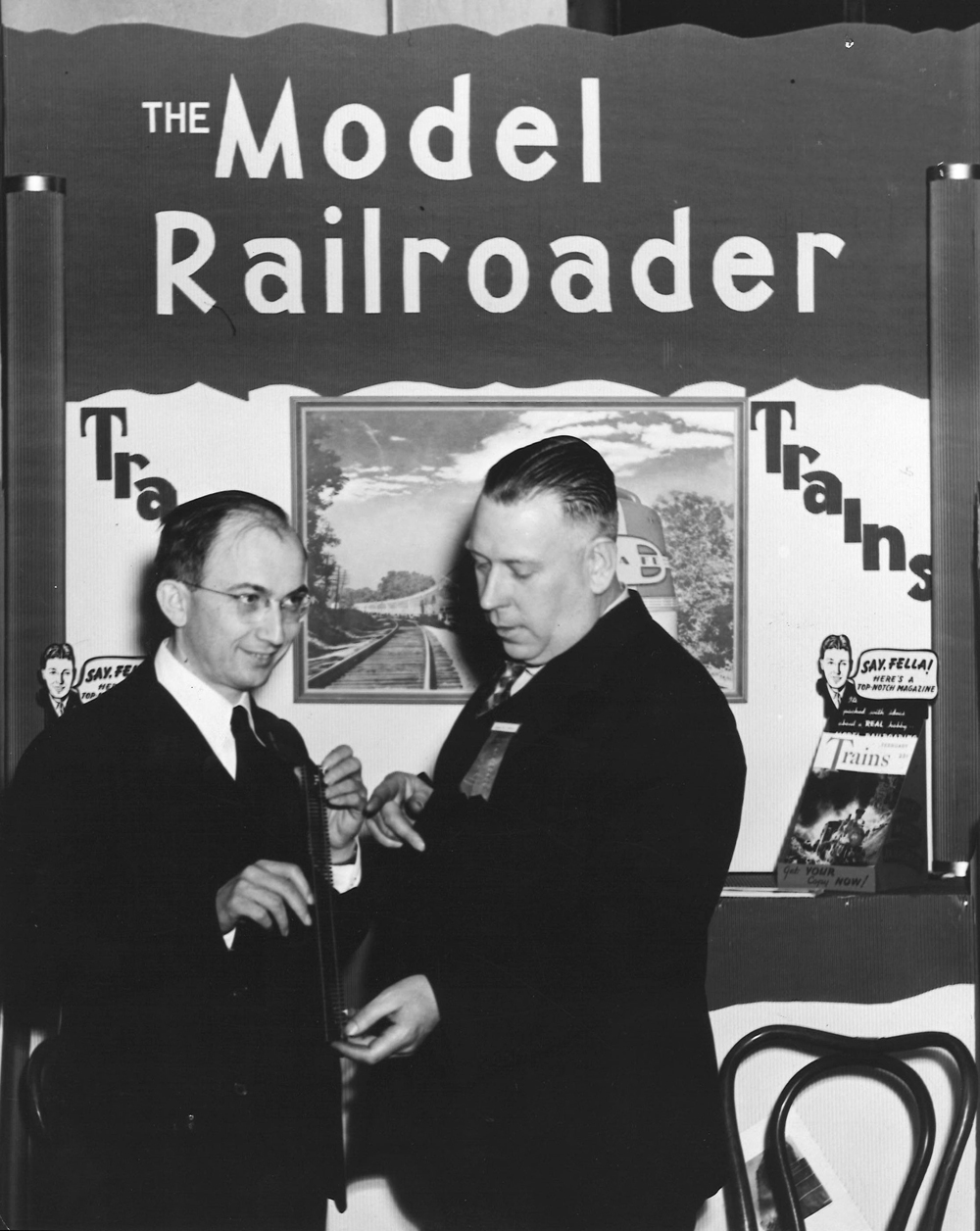
One of the men showed a sheriff’s star, I was taken off the train, put on one of the horses, and carried into Durango where we met the train in the open space next to the depot.
Practically all the population was gathered there, and when the train had arrived and out crowd was off, the sheriff took me up on a platform and produced a blue-bound, legal looking document accusing me of various crimes such as “inciting grown men to play with trains.” My two daughters in the front row gleefully yelled “Hang him, he’s guilty!”, but my 7-year-old son broke down in tears, and they didn’t hang me after all.
The Chamber of Commerce of Durango then joined the NMRA group on an unexpected and most pleasant special train trip up the canyon of The River of Lost Souls toward Silverton, and we ended up as guests at a western-style barbecue under the stars.
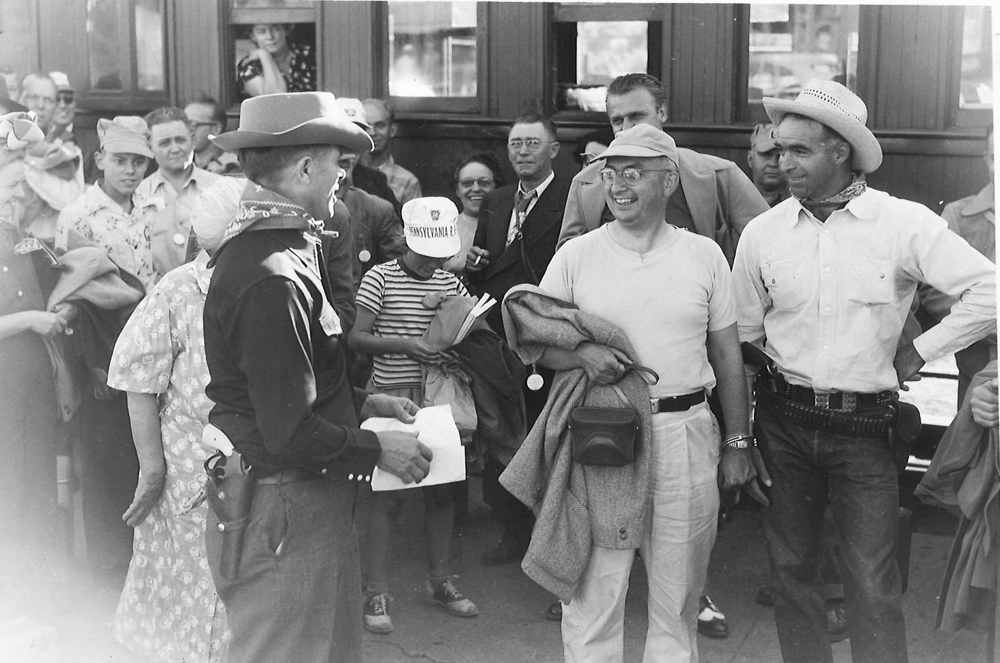
I have not mentioned names because there are so many. They appear in the official records – men like the late Pop Beck, that tireless organizer of fan trips – Harry Bondurant, the man who started off on the completely uncharted course of setting standards in 1935 – Bill Rau of Pittsburgh, the guy who came the furthest to the first convention – Ed Ravenscroft, the leader who did such a wonderful job of realizing the full potential of NMRA at the end of World War II – Bill Haverly of Chicago, with his attic fill of 17/64th scale, our first president – the late Kirke Comstock, who commuted as causally across the country to every NMRA meeting as he did 200 miles round trip once a week to the Detroit Model Railroad Club meetings. These – and countless others – are, and have been, the NMRA – these many friends – plus that binding ingredient, the world’s finest hobby.
If you enjoyed this speech by A.C. Kalmbach, check out Andy Sperandeo’s speech, “Greatest Moments in Model Railroading,” where he recalls his most memorable moments in the hobby.






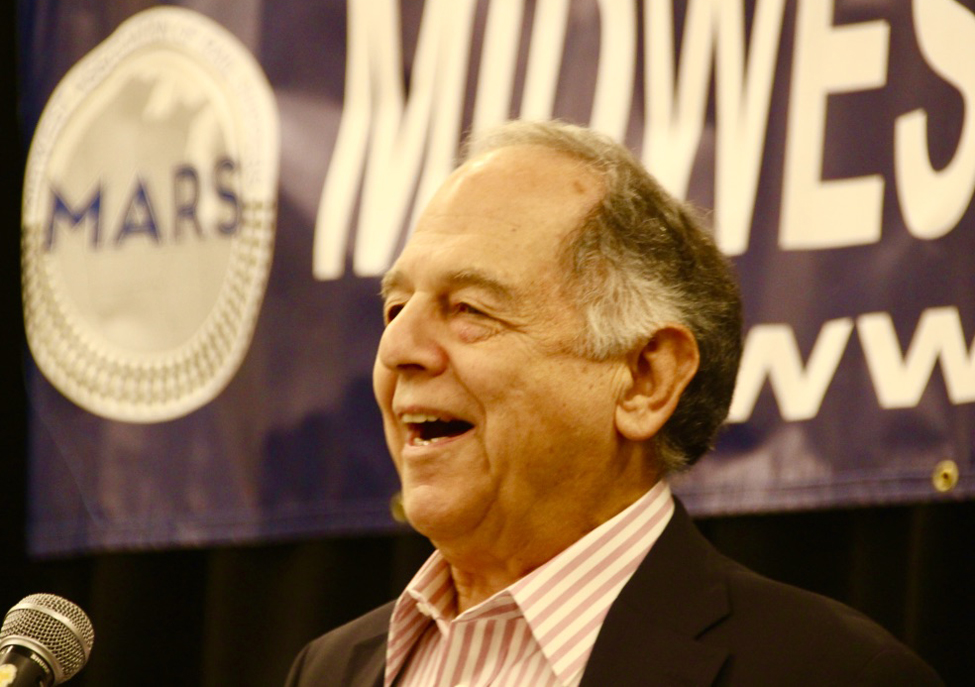
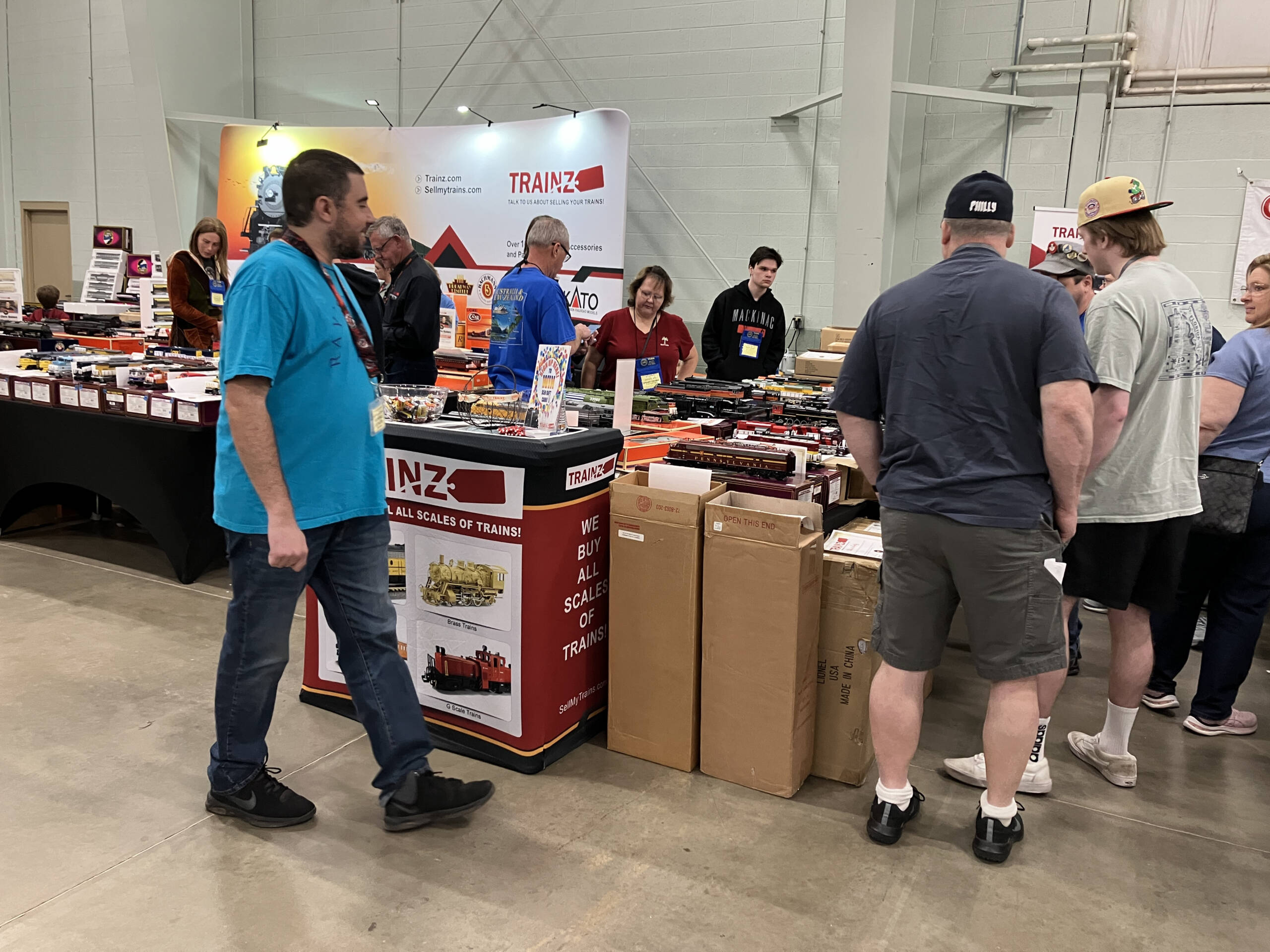
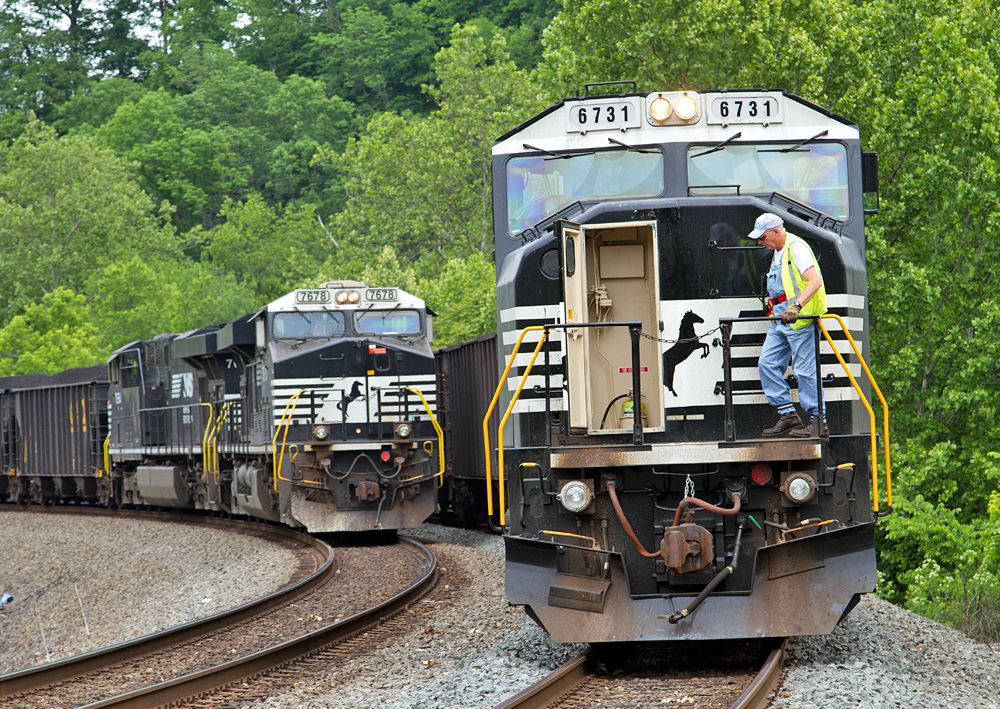
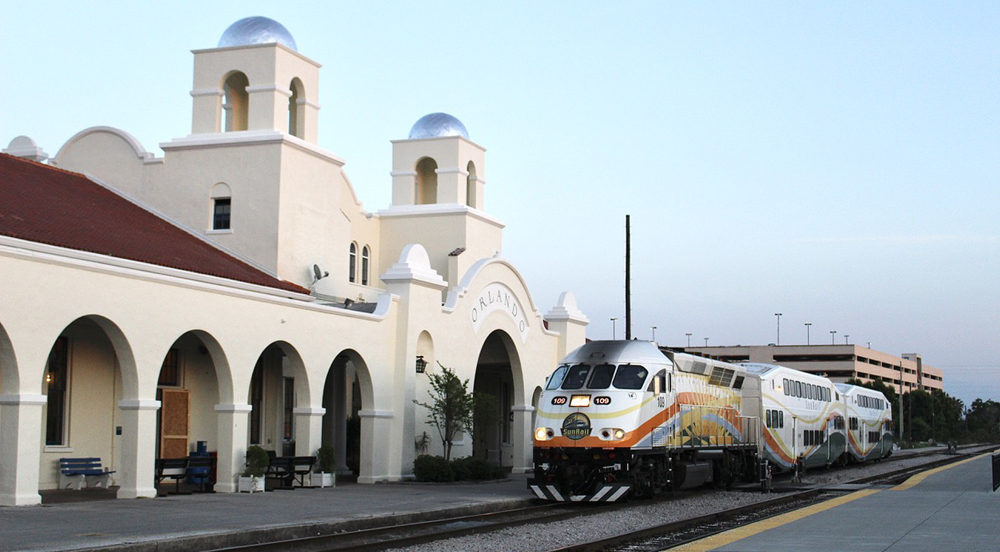




Ed Ravenscroft – I still operate every month on sections of Ed Ravenscroft last layout with the cars used from his layout. Including the round house and turntable from the 1972 June MR Fisheye cover. Aptakisic from the 1972 September article Aptakisic – that swingin’ town has been saved and is still in operation as of today. You look at the old model railroaders from his layout and those cars in the photos and on the cover are still in use over 50 years later. Talk about setting an NMRA slandered .
I appreciate this tidbit of history. I am a member of the NMRA. I believe in it. One problem I have with these online articles, is that there are spelling mistakes and the photos are miscaptioned. Al wouldn’t like that.
Too bad Model Railroader today does little to promote membership in the NMRA. They delete MMR from author’s names for no apparent reason. BTW, MMR stands for Master Model Railroader; there are fewer than 800 of these fine modelers worldwide.
Thank you so much for this wonderful history of the NMRA creation and expansion over the decades. I’ve read snippets of the organization’s history through Model Railroader Magazine over the years, but this article brings it all together succinctly and with plenty of humor. Honored to be a “grown man playing with trains”.